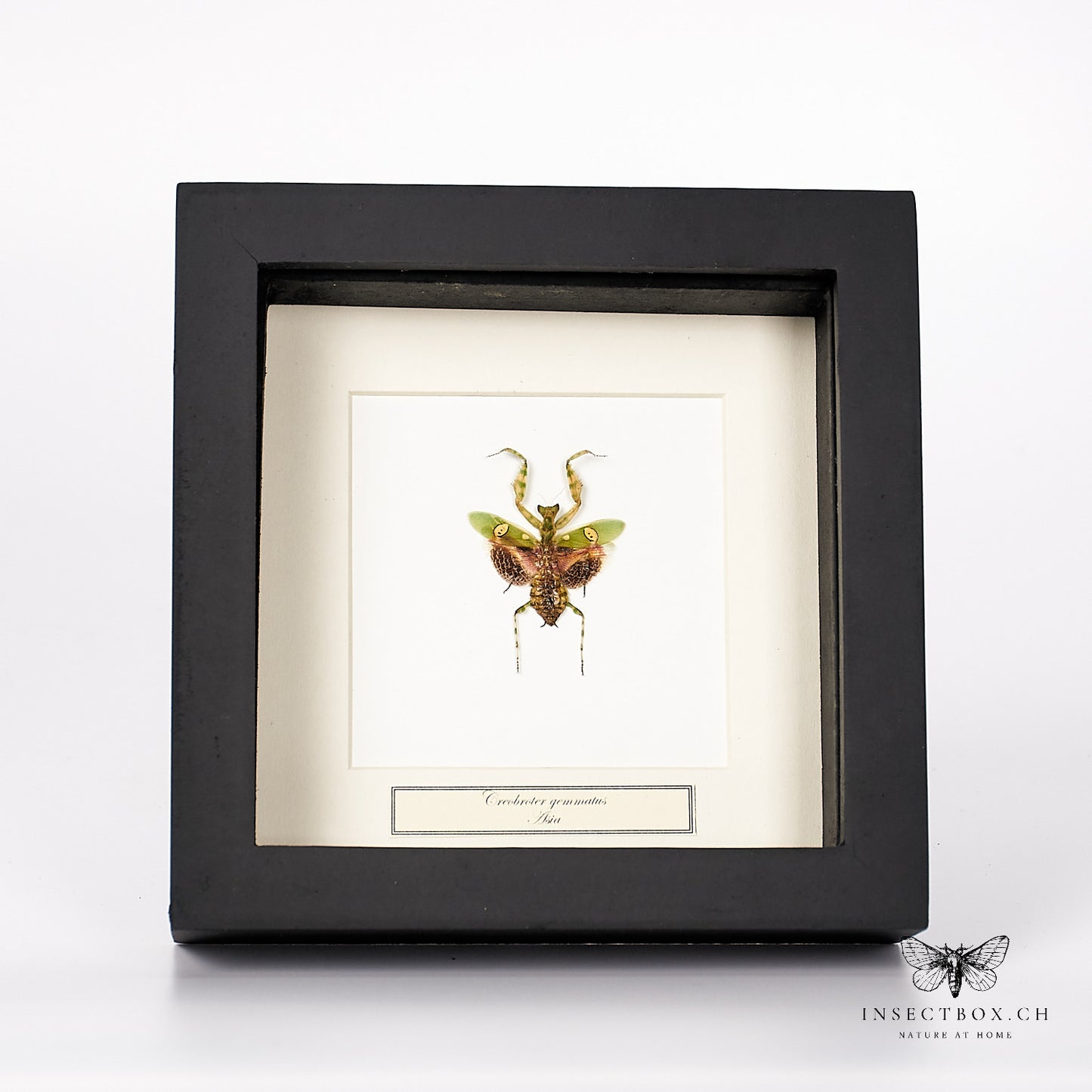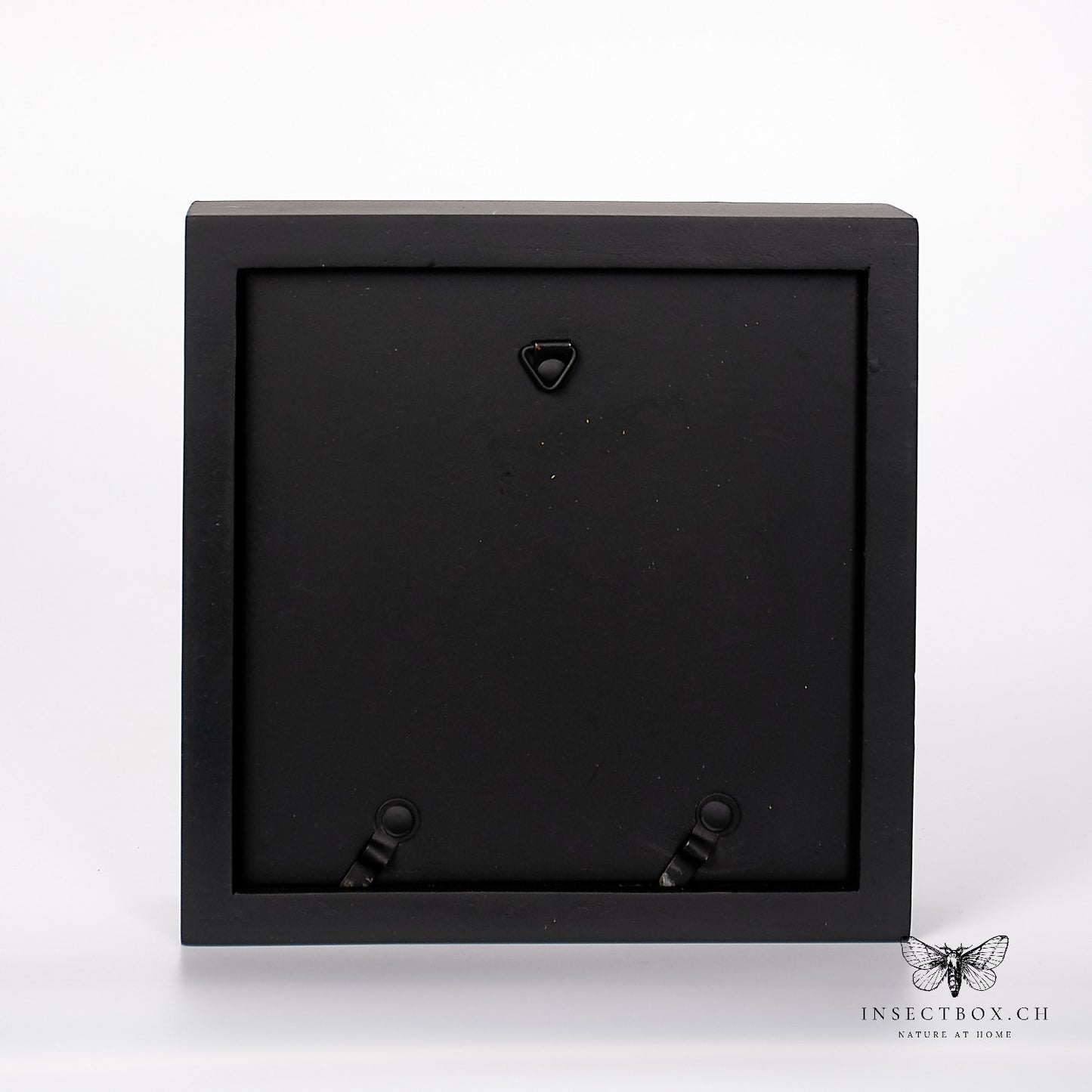carminehome
Asian flower mantis - creobroter gemmatus
Asian flower mantis - creobroter gemmatus
Couldn't load pickup availability
Asian flower mantis -creobroter gemmatus
The Asian flower mantis, also known as the pearl mantis (Creobroter gemmatus), is a mantis in the family Hymenopodidae and is native to South, Southeast and East Asia.
Characteristics :
The males of the Asian flower mantis reach a length of about 3.8 cm, while the females are larger at over 4 cm. The adults are characterized by their striking and colorful coloring of their wings. The body of the flower mantis varies depending on the habitat of the population and can be colored from light green to dark green to yellow-green, while the wings are colored pink. When at rest, the wings are not visible, which means that the flower mantis is well camouflaged in moist grass and bush landscapes and bamboo forests. However, when it spreads or splays its wings, it resembles a flower. This form of Peckham's mimicry probably serves to attract prey that are attracted to the shape and color of the flower. The Asian flower mantis also has, like many praying mantises, false eyespots on the hind wings and on the inside of the tentacles, which are used for threatening gestures.
Happen:
The Asian flower mantis is mainly found in Vietnam and Indonesia. Its preferred habitat is shrubs, grasses and flowering plants in rainforests.
Way of life:
Like other praying mantises, the Asian flower mantis is a diurnal ambush predator. It usually remains motionless and defends itself when threatened with a threatening gesture, spiny tentacles or bites. In its habitat, it lies in wait for prey of a suitable size, especially other arthropods.
Reproduction:
The male reaches sexual maturity after the seventh molt, the female after the eighth molt. Mating takes place after one week for the male and two weeks later for the female. The female attracts the male with pheromones. Mating can last up to eight hours. As with other praying mantises, cannibalism is common in the Asian flower mantis during or after mating, with the females often eating the males. The mated female then lays up to eight oothecae. These are flat, brown and up to six centimeters long. About four to eight weeks after laying, up to 90 young hatch from one oothecae. The males have a lifespan of about a year, while the females can live for about a year and a half.
Terrariums:
Due to its fascinating appearance and easy care, the Asian flower mantis is one of the most commonly kept mantises in terrariums.
Share




